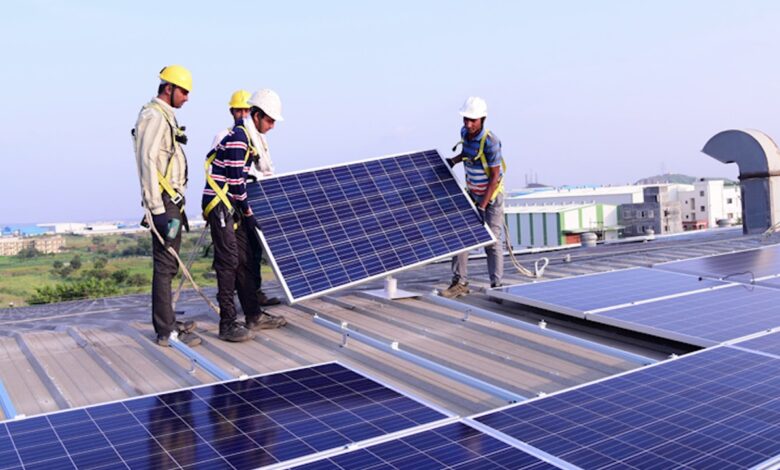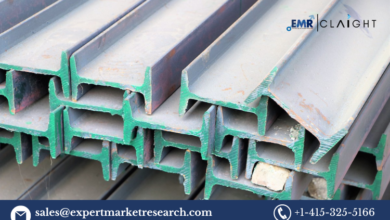
As the adoption of renewable energy continues to grow, homeowners are increasingly turning to rooftop solar technologies to reduce their carbon footprint and save on energy costs. However, with various solar technologies available on the market, choosing the right one for your home can be overwhelming. This article will guide you through the key factors to consider when selecting the best rooftop solar technology for your needs, and explain how Finray Solar can assist you in making an informed decision.
1. Understanding the Different Types of Rooftop Solar Technologies
Before diving into the selection process, it’s essential to understand the different types of rooftop solar technologies available. The three main categories are monocrystalline, polycrystalline, and thin-film solar panels. Each type has its own set of advantages and drawbacks.
Monocrystalline Solar Panels
Monocrystalline rooftop solar are made from a single, continuous crystal structure, which gives them their characteristic black color. These panels are known for their high efficiency and durability, making them a popular choice for homeowners with limited roof space.
- Advantages: Monocrystalline panels offer the highest efficiency rates, typically between 15% and 22%, meaning they convert more sunlight into electricity compared to other technologies. They also have a longer lifespan, often exceeding 25 years.
- Drawbacks: The main drawback of monocrystalline panels is their cost. They are generally more expensive than other types of solar panels due to their complex manufacturing process.
Polycrystalline Solar Panels
Polycrystalline solar panels are made from multiple silicon crystals melted together, giving them a blueish appearance. These panels are slightly less efficient than monocrystalline but are more affordable.
- Advantages: Polycrystalline panels are less expensive to produce, making them a cost-effective option for homeowners looking to install solar without a significant upfront investment. They still offer decent efficiency rates, usually between 13% and 17%.
- Drawbacks: While more affordable, polycrystalline panels are less efficient and may require more roof space to generate the same amount of electricity as monocrystalline panels.
Thin-Film Solar Panels
Thin-film solar panels are made from a variety of materials, including cadmium telluride (CdTe) and amorphous silicon. These panels are lightweight and flexible, making them suitable for unconventional or curved roof surfaces.
- Advantages: Thin-film panels are lightweight and can be installed on roofs that cannot support the weight of traditional panels. They also perform better in low-light conditions and are more resistant to high temperatures.
- Drawbacks: Thin-film panels have lower efficiency rates, typically between 10% and 12%. They also have a shorter lifespan and may require more frequent replacement.
2. Assessing Your Roof’s Suitability
The next step in choosing the right rooftop solar technology is assessing your roof’s suitability for solar panels. Factors such as roof orientation, tilt, and shading will influence the type of solar panel that will work best for your home.
Roof Orientation
The orientation of your roof plays a crucial role in the amount of sunlight your panels will receive. In the northern hemisphere, south-facing roofs receive the most sunlight throughout the day, making them ideal for solar panel installation. However, east- and west-facing roofs can also work well, especially with more efficient panels like monocrystalline.
Roof Tilt
The angle or tilt of your roof affects how much sunlight your panels can capture. The optimal tilt angle is typically equal to your geographic latitude, but most rooftops have a fixed angle. If your roof’s tilt is not ideal, certain types of panels may perform better than others. For example, thin-film panels can be more effective on flatter roofs.
Shading
Shading from trees, buildings, or other obstructions can significantly reduce the efficiency of your solar panels. If your roof is prone to shading, monocrystalline panels might be the best choice due to their higher efficiency in limited sunlight.
Roof Material
The material of your roof can also influence the type of solar panels you should choose. For example, thin-film panels may be better suited for metal or membrane roofs, while traditional monocrystalline or polycrystalline panels are typically installed on shingle or tile roofs.
3. Comparing Costs and Return on Investment
When choosing between different rooftop solar technologies, it’s important to consider not only the initial cost but also the long-term return on investment (ROI).
Initial Costs
Monocrystalline panels, being the most efficient, are generally the most expensive. Polycrystalline panels are more budget-friendly, while thin-film panels are often priced between the two. However, the total cost of your solar installation will also depend on other factors such as labor, permits, and any additional equipment like inverters and mounting systems.
Energy Savings
Higher efficiency panels like monocrystalline may offer greater energy savings over time, potentially offsetting their higher initial cost. To estimate your savings, calculate the amount of electricity your system will generate based on your location, roof characteristics, and the type of panel you choose.
Incentives and Rebates
Take advantage of solar incentives and rebates available in your area. These can significantly reduce the upfront cost of your solar installation and improve your ROI. Finray Solar can assist you in identifying and applying for these incentives to maximize your savings.
Lifespan and Maintenance
Consider the lifespan and maintenance requirements of each type of solar panel. Monocrystalline panels typically last the longest and require minimal maintenance, while thin-film panels may need to be replaced more frequently.
4. Considering Aesthetics and Roof Space
For many homeowners, the appearance of solar panels on their roof is an important consideration. Additionally, the amount of available roof space will influence the type of solar technology that is most suitable.
Aesthetic Preferences
Monocrystalline panels have a sleek, black appearance that many homeowners find attractive. Polycrystalline panels, with their blueish tint, may be less visually appealing to some. Thin-film panels offer a more discreet option, as they can be integrated into the roof surface or even installed as solar shingles.
Roof Space
If you have limited roof space, you’ll want to choose the most efficient panels available, such as monocrystalline. These panels generate more electricity per square foot, allowing you to maximize your energy production even with a smaller installation area.
5. Why Choose Finray Solar for Your Rooftop Solar Installation
Selecting the right rooftop solar technology is a critical decision, and having a reliable partner like Finray Solar can make the process easier and more efficient. Finray Solar is the best website for all your solar energy needs, offering a wide range of high-quality solar panels and expert installation services.
Expert Guidance
Finray Solar’s team of experts will assess your home’s unique characteristics, including roof orientation, shading, and space, to recommend the best solar technology for your needs. Their personalized approach ensures that you get the most out of your solar investment.
High-Quality Products
Finray Solar offers a selection of monocrystalline, polycrystalline, and thin-film solar panels, allowing you to choose the technology that best suits your budget and energy goals. All products are sourced from reputable manufacturers and come with comprehensive warranties.
Professional Installation
With years of experience in the solar industry, Finray Solar’s installation team ensures that your panels are installed correctly and efficiently. They handle everything from securing permits to connecting your system to the grid, so you can enjoy a hassle-free experience.
Ongoing Support
Finray Solar provides ongoing support and maintenance services to ensure that your system continues to perform at its best. Whether you need help with monitoring your energy production or troubleshooting an issue, their team is always available to assist you.
Conclusion
Choosing the right rooftop solar technology requires careful consideration of various factors, including efficiency, cost, roof suitability, and aesthetics. By understanding the differences between monocrystalline, polycrystalline, and thin-film solar panels, you can make an informed decision that meets your energy needs and budget.
Finray Solar is your trusted partner in navigating the complexities of solar technology. With their expert guidance, high-quality products, and professional installation services, Finray Solar ensures that your transition to solar energy is smooth and successful. Whether you’re just beginning your solar journey or looking to upgrade your existing system, Finray Solar is here to help you every step of the way.





